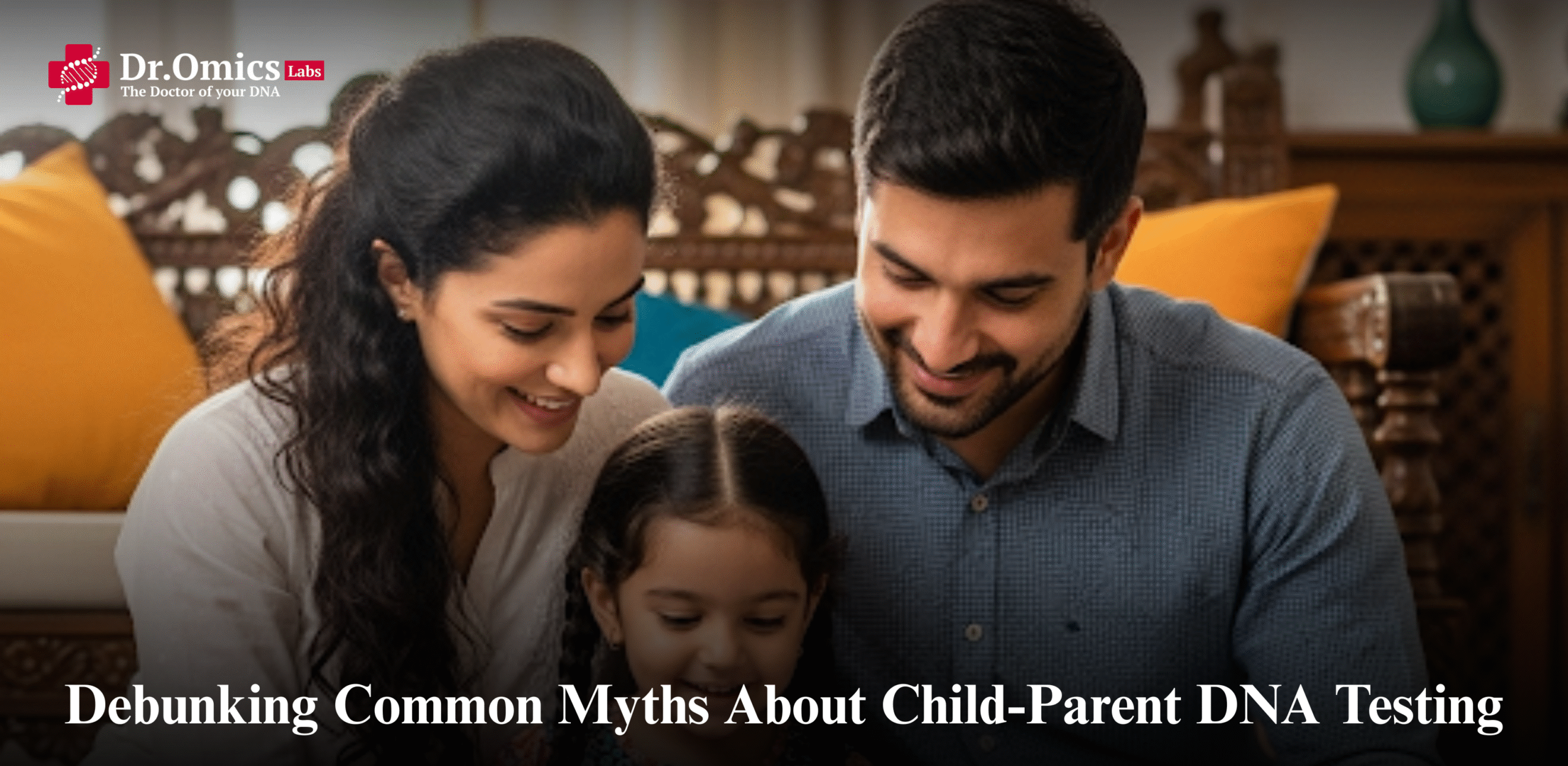Introduction
DNA testing has revolutionized family relationships, providing clear answers in cases of paternity, child custody, inheritance, and more. Yet, despite its scientific accuracy, myths and misinformation still surround this life-changing technology. In this post, we’re setting the record straight by debunking common myths about child-parent DNA testing, addressing paternity test misconceptions, and revealing the real genetic testing facts.
Myth 1: DNA Tests Are Only for Criminal Investigations
Reality: While DNA plays a major role in forensic science, it’s just as important in everyday family matters. Paternity tests, maternity verification, grandparent tests, and sibling analysis are all used in civil legal cases and personal decisions. Families use DNA testing for immigration documentation, legal custody, child support, and peace of mind.
Myth 2: DNA Tests Can Be Easily Fooled or Tampered With
Reality: This is one of the most persistent false DNA test beliefs. Accredited DNA testing labs follow strict chain-of-custody procedures and use advanced genotyping techniques that make sample tampering almost impossible. At-home test kits are also highly reliable when used correctly.
Myth 3: All DNA Tests Give Immediate Results
Reality: While some companies advertise rapid results, accurate testing takes time. Laboratory-based paternity tests usually deliver results in 3–7 working days, depending on the service type. Speedy results are possible, but always prioritize accuracy over speed.
Myth 4: DNA Tests Are 100% Accurate All the Time
Reality: DNA testing is one of the most accurate scientific methods available, with most legal paternity tests boasting 99.99% accuracy when confirming a biological relationship. However, poor sample quality or contamination may rarely lead to inconclusive results. Choosing a certified lab is key to getting reliable genetic testing facts.
Myth 5: Only the Father and Child Need to Be Tested
Reality: While a child and alleged father are usually sufficient, in some complex cases—such as when the father is unavailable—testing the mother, siblings, or grandparents can help strengthen results. Including more family members can increase the statistical power of the test.
Myth 6: Paternity Tests Can’t Be Done on Newborns
Reality: Child-parent DNA testing can be done even before birth using non-invasive prenatal paternity (NIPP) tests. For newborns, a simple cheek swab within days of birth is enough. There’s no need to wait, and the process is entirely painless.
Myth 7: Home DNA Tests Aren’t Legal
Reality: Home paternity test kits are valid for personal knowledge. However, for court-admissible results in custody or child support cases, a legal DNA test with verified sample collection and documentation is required. The difference lies in the process, not the science.
Myth 8: DNA Tests Are Too Expensive for Most Families
Reality: Thanks to technological advances, DNA testing has become far more affordable and accessible. Many labs now offer flexible pricing, at-home kits, and even EMI options. Accurate child-parent testing is no longer out of reach for the average person.
Conclusion: Know the Facts, Not the Fears
Child-parent DNA testing is a powerful tool that brings clarity, closure, and legal protection. Unfortunately, outdated ideas and false DNA test beliefs still prevent many families from accessing the truth. By understanding the facts behind genetic testing and rejecting paternity test misconceptions, you can make informed decisions with confidence.
Whether you’re seeking peace of mind or legal verification, always rely on certified, accurate testing. DNA doesn’t lie—but the myths around it certainly do.
Ready to uncover the truth? Choose a trusted DNA testing provider and find answers backed by science.




